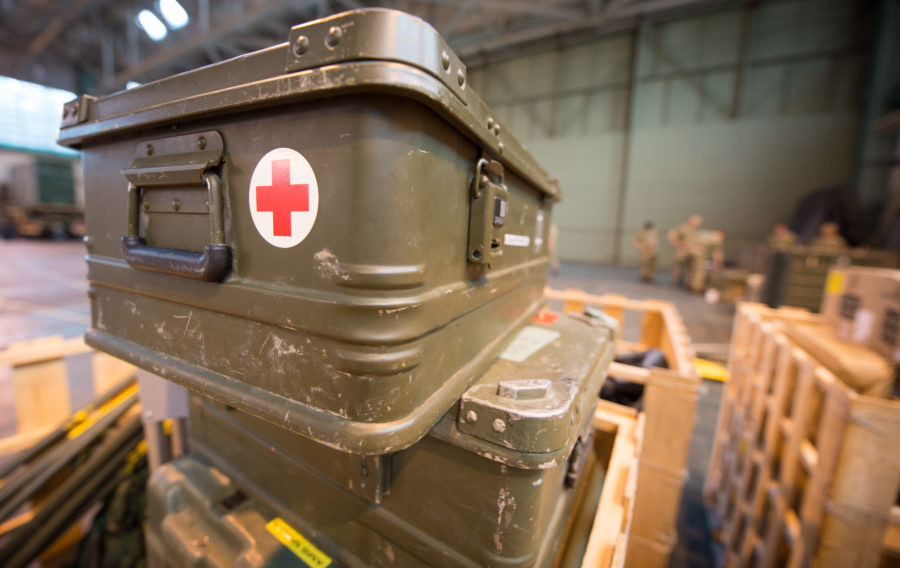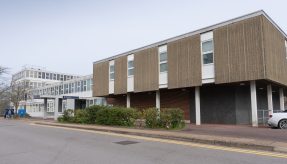
The Defence Science and Technology Laboratory (Dstl) is funding pioneering new techniques to treat injured limbs and reduce battlefield amputations.
Biomedical engineers from the University of Strathclyde in Glasgow have developed an innovative approach with financial support from Dstl via the Defence and Security Accelerator (DASA). Their research forms a response to conflicts in Iraq and Afghanistan, where improvised explosive devices or IEDs are commonplace – having caused countless traumatic and potentially life-changing injuries.
A three-stage approach pairs practical field kit with advanced medical techniques once the patient is evacuated. Initially, a specialist tourniquet is applied to the limb which exerts pressure at specific points. A cooling sock is then wrapped around the tissue itself to prevent further damage. Once at the hospital, the affected limb is placed inside a protective box to sustain it while doctors attempt a recovery. Crucially, this box is filled with decontaminated air to reduce the risk of infection while a continuous supply of blood is transfused to the area affected.
The technology itself weighs only five kilogrammes – an important consideration for combat medics on the battlefield where mobility is key. The system could have non-combat applications as well – during natural disasters or in remote locations, for instance.
“While this technique may not be right for every injury, it is a hugely important innovation that could save the limbs of many more of those affected,” said Dr Neal Smith, Capability Adviser for Medical Sciences at Dstl. “It’s a fantastic example of where we work with academics to fund life-changing research which has been turned into a product to improve the quality of life of those injured in service.”
Professor Terry Gourlay, Head of the Department of Biomedical Engineering at Strathclyde University, added: “We looked at every stage of the journey an injured soldier follows after injury to ensure our solution was designed specifically for them. The system we have developed is essentially a life-support system for the limb which gives doctors precious time to attempt to repair damage while ensuring the safety of the patient.”
Following successful trials, the system will be made available commercially and it could one day form part of the medical kit in every frontline unit.
Meanwhile. Professor Gourlay’s specialist team has also pioneered an innovative new blood salvaging technique known as HemoSep. In a feat of biomedical engineering, HemoSep allows blood lost during surgery to be immediately transfused back into the patient, reducing the need for donated blood which is so often in short supply – on the battlefield especially. HemoSep is now being adapted for military use, also via Dstl funding.
All of which forms part of the laboratory’s wider ‘Protecting Our People Programme’ which aims to enhance the medical capability of our Armed Forces. Here, injuries caused by chemical, biological and radiological (CBR) weapons are being researched alongside those resulting from more conventional arms, the question being: how can breakthroughs in science and technology help counter the most common frontline threats?
In answering this question Dstl hopes to better identify potential innovations with a view to improving the survivability and recovery time of those injured by conventional, novel and CBR weapons. This could mean affordable medical countermeasures, for example, or methods of medical care in complex environments.
Dstl is also offering specialist advice via the Protecting Our People Programme on such matters as healthcare provision, the delivery of effective healthcare throughout the defence landscape, and the ability to field practical medical equipment in any climate or contested environment. If the fruits of this labour are able to save just one life or preserve a single limb, it will all have been worth it.
image © Crown Copyright
If you would like to join our community and read more articles like this then please click here.
Defence Science and Technology Laboratory Dstl limb injuries Protecting Our People Programme







